Features of natural veneer
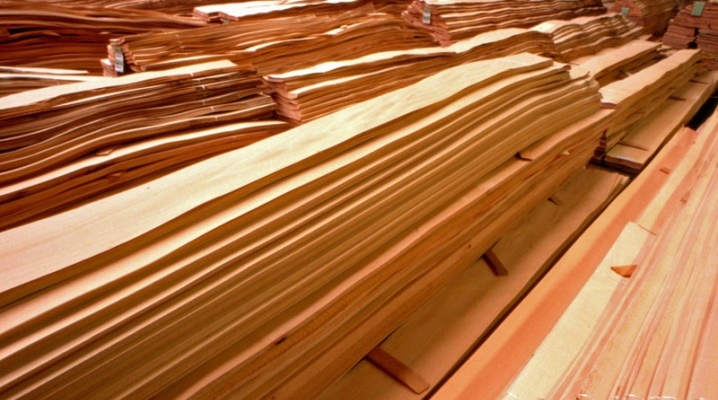
Modern consumers often want to decorate their interior with furniture, doors and other household items made from natural wood. Since natural raw materials are quite expensive and also have a large mass, finishing is often done with veneer.
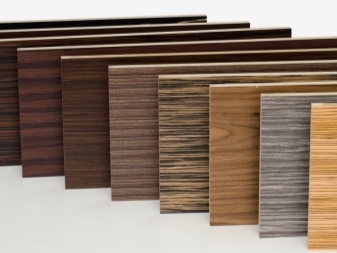

What it is?
It is considered a deep misconception that veneer is a kind of artificial finishing material. Natural veneer is a decorated wood sheet that has been cut from the solid wood and retained the pattern of the breed. It is realized in the form of plates that have a thickness of up to 1-2 cm. This finishing material is produced using special modern technologies.
The main difference between natural veneer and restored veneer is the pronounced texture of the wood pattern. Also, natural material can be recognized by tactile sensations. PVC film usually reminds everyone of the usual plastic.
This type of coating is realized in a dried, sanded form with a protective coating already applied.
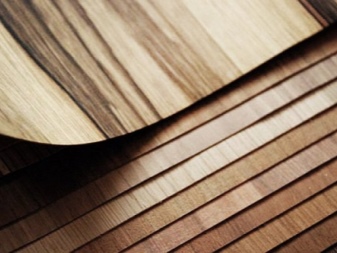
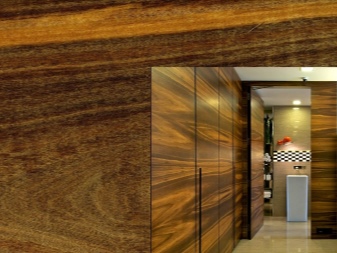
Advantages and disadvantages
Natural wood veneer has many advantageous characteristics that make it a frequent choice for consumers. This coating rarely deteriorates from the influence of negative environmental factors, it is not prone to cracking. The advantages of a material with a seamless texture are:
- profitability;
- attractive appearance and aesthetics;
- environmental safety (veneer contains about 75% of natural wood, so it can be safely used when decorating the interior of any of the rooms, in particular the nursery);
- a wide range of shades;
- high strength and reliability;
- long service life.
If the veneer has been used for a long time, then it can be restored. Furniture and door structures, which are finished with this coating, are cheaper, but at the same time they are characterized by special practicality. This type of coating has practically no drawbacks. The disadvantages of the material can be considered that it can deteriorate under the influence of moisture.
Also, experts say that natural veneer is prone to scratches, so it should be protected from animals.

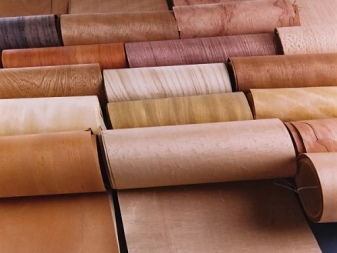
Varieties
Numerous types of wood can be used to make veneers of different textures. After the manufacturing process, the manufacturer receives white, creamy, light brown, chocolate, golden, caramel, purple and hot pink sheets.
Depending on what technology the manufacturer uses, varieties of natural veneer stand out.
- Peeled. Sheet goods are sold in the form of a thin material with a thickness not exceeding 5 mm. Inexpensive veneer is made from birch, aspen, alder species. A beech leaf is in good demand, which is often used during the manufacture of combined material.
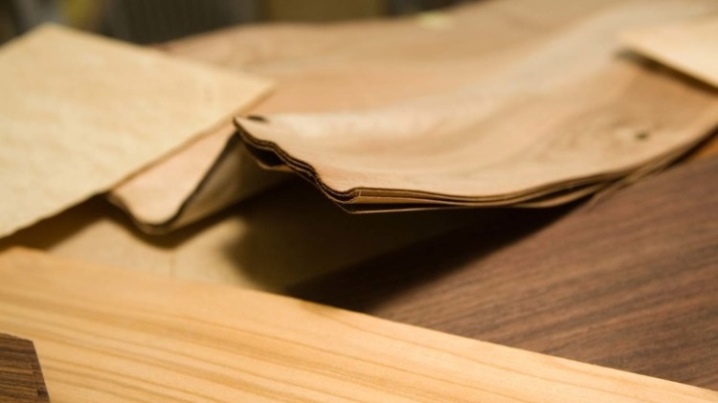
- The planed look is produced up to 1 cm thick. It is obtained by processing the prepared material with knives. Veneer plates can have different textures and patterns. In this case, the production is actively using cedar, fir, beech, hornbeam.

- Sawn material is one of the most expensive. Its manufacture takes place through the use of special saws. During the process, only conifers are used. The thickness of the sawn sheet is from 5 to 12 mm.In addition to the fact that all of the above products can be found on the market, consumers often prefer lamella veneer, nodular, and fine-line. The latter is often confused with plastic. However, it is produced by pressing peeled flakes into large blocks.
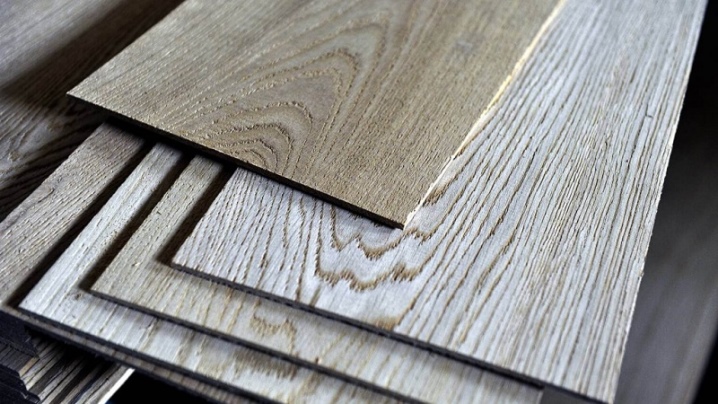
What are they made of?
Natural veneer is made from different types of wood.
- Oak. Usually grows in Europe and America, as well as in wetlands. Oak is characterized by strength and durability. Finishing material from this breed will be able to fit well into the interior, therefore, with its help, parquet is made, door and furniture structures are faced. Oak veneer can be white to brown in color.
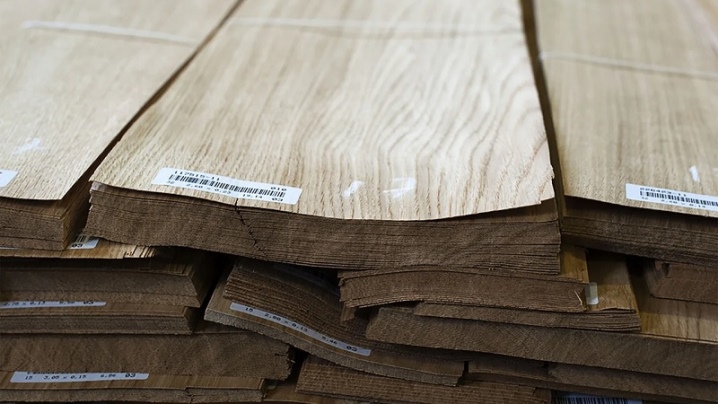
- Nut. Natural walnut veneer is made from American, Californian, European breeds. The color of the finishing sheets is often brown.
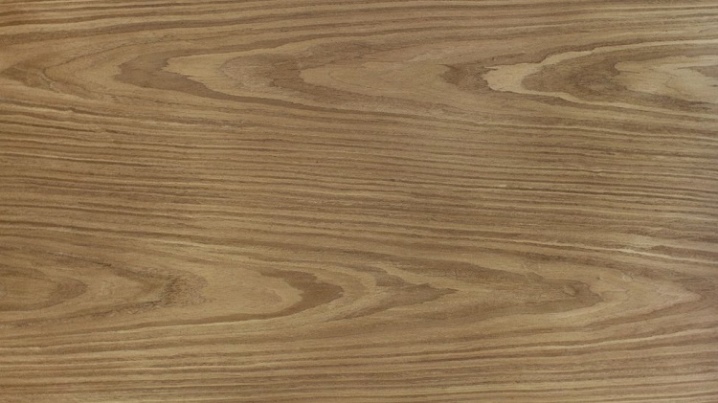
- Maple can be folded, curly and European type. Maple veneer is characterized by an almost white wood, but sometimes it can also be found in a brown shade.

- Cherry. American and European cherries can be recognized by their reddish brown color. Usually it is used for the manufacture of elite models of furniture structures.

- Wenge is the wood of African trees. High quality decorative coating is produced from exotic species. The wenge material is dark brown.
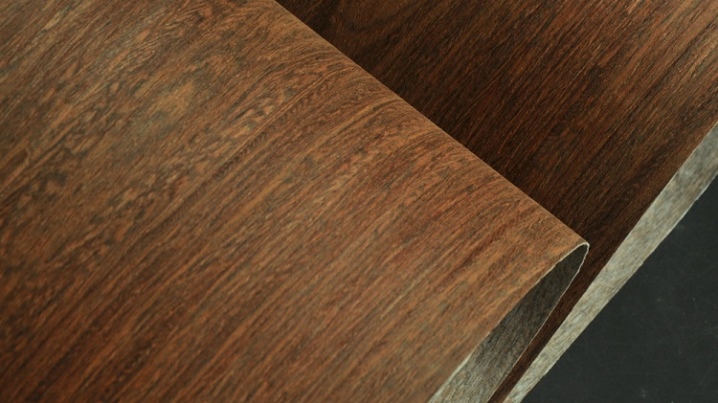
Often, for the manufacture of natural veneer, the manufacturer uses alder, larch, pine, cedar. Also, this high-quality coating can be made from mahogany and valuable ebony. In order to make a material of decent quality, wood is selected in which the minimum number of knots and strokes with resin, but also there is no ingrown bark and large cracks. Logs are prepared by eliminating the bark, cleaning the upper damaged surface and cutting it into large ridges.
Depending on what the next processing process will be, the logs can be divided into small fractions. In order to soften and adjust the shade, the wood is steamed for several days, after which it is soaked in a hot liquid. Such processing is unacceptable for maple, because it is considered a capricious breed. For the manufacture of canvases, the tree is driven through the machine. Fresh sheets are dried, sorted, laid out in bundles and cut.

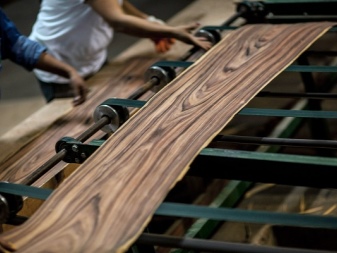
Where is it used?
Since veneer is a lightweight natural material that has the characteristics of a real wood, it has found its application in many sectors of life and industry. Thin peeled fabric has found its application in the manufacture of matchboxes and other containers, plywood types. Veneered panels are practically indispensable for cladding MDF-base, chipboard, drywall and partitions.
Veneer sheets are used during the restoration of old furniture and other surfaces. Often, planed veneer trims the furniture facade, door leaf, flooring, decorative elements, sports and household equipment. Sawed veneer has found its application in the production of various art objects, expensive types of furniture, tools, arches, souvenirs and even caskets.

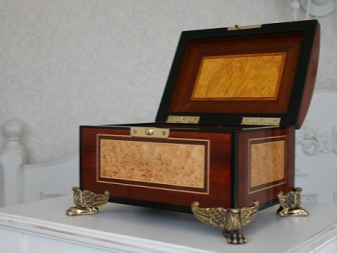
The unique pattern of natural veneer is used when creating inlay using the marquetry technique. It can also be found on a wooden facade. It will not be enough to make the surface finish with natural veneer, since it still needs to be looked after. In order to increase the service life of the material, it is worth adhering to the following rules.
- do not clean the surface with abrasive substances, hard metal brush, alkaline or acidic solution;
- do not wet the veneered product with a large amount of water, do not press with sharp objects, do not clean with a blade;
- if the shelf or countertop is covered with veneer, then it is not recommended to put too hot dishes on it, in this case it is worth using a substrate;
- stains and dirt should be removed with a sponge, a piece of suede cloth or a soft bristled brush;
- it is recommended to wipe the painted or varnished surface with polish;
- you can use an alcohol-based product to remove grease from the surface;
- the ink should be removed with a rubber band.
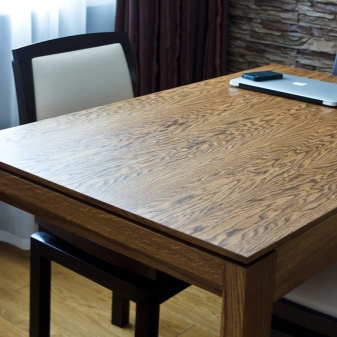
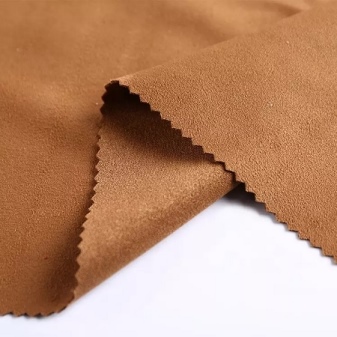
If the veneered surface has lost its shine, then the situation can be corrected by painting it with a special paint or varnish. Natural veneer is a modern type of quality material that can be a worthy alternative to wood. Currently, it is quite in demand, as it has good performance characteristics and does not create difficulties in maintenance.
The safety of this material has been proven by experts, so it can be used in rooms for any purpose, with the exception of bathrooms and saunas.
In the next video, you will see how to make a royal table top from natural veneer with your own hands.













The comment was sent successfully.